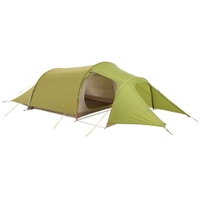Your tent is your second home? Or your companion on your outdoor adventures? Tents come in different sizes and constructions. There are a bunch of factors to consider.
Where should the journey go?
Choosing the right tent largely depends on what you have planned with it. You want to go camping? You are planning a trekking tour? Well, then you need the right tent.
The Route determines the weight
A big factor for choosing the right tent is the weight of it. Next, to the size of the tent, it depends on the used material, for example carbon being used in tent poles. If you are planning on doing grand tours through nature, you sure want a light-weight tent. Because you will for sure feel those extra kilos. Of course, you also want the so-called packaging bags to be as tiny as possible because you need that storage space in your backpack for other gear. But if you are going to camp and probably have a car or bike to transport it with, you should go for a camping tent with up to 10 kg. Those of you doing a longer mountain tour should get an expedition tent. These tents are a bit more robust, which means that they will withstand rough winter storms and be able to carry snow. These are usually so-called geodesist tents.
Tarp-, Dome-, Pop-Up or Tunnel Tent? where is the difference?
There are many names or different tents. Mostly they are different because you have to build them up differently.
The Tarp – The uncomplicated buddy
The tarp is an easy going tent. You can say it’s the uncomplicated buddy of all tents. The tart tent is a big roof, which is fixed onto poles in the ground. These shelters protect you from above – be it sun or rain. A big advantage is, that if you put this tent up high enough, you can easily stand underneath and you will always have loads of fresh air.
The Dome Tent – The Classic
The dome tent is very popular because it is easy, fast and very stable and often self-standing. Imagine them as a small dome. Because the poles are built into one another, the tent does not have to be fixed onto the ground intensely. Normally, the dome tent is a bit heavier than other tents, but there are also slight variants. Some dome tents are flat, others. But they also do not need much space, meaning they are very handy when the terrain is not that easy and flat.
The Tunnel Tent – The Practical
The tunnel tent weighs a bit less and has very efficient use of space within. It has to be tightened to the ground.
The Pop-Up-Tent – Just easy going
No need to juggle around with poles and stuff. The pop-up-tent sets up by itself. All you have to do is tighten it to the ground.
Size matters
The sizing of tents is relatively simple. There are tents for one person, two, three or more people. You should find that information in your tent. By the way: some dome tents can also be put together to create large family tents!
vestibules and Entrances
Most tents also have vestibules. When you exit the inner tent you will get to this area, which is still protected by the outer tent. While the outer tent protects you from the weather, the inner one keeps mosquitoes and such out. This tent is breathable.
Especially convenient are those tents with two entrances. That way, you can air the tent out easily. Mostly they have windows and alike. When it is windy out, you need guy ropes to keep the tent in place. The tent also protects you from rain, because it is waterproof.
Like with outdoor clothing, the water columns of your tent tell you how tight the material is.
Storage, Repair and care
If you don’t use your tent anymore, you should store it in a dry but well-ventilated room. A suitable packsack is ideal.
Before you store your tent, you should check, if it’s clean. You can clean it with a wiping cloth.
Your tent has tears? The tent poles are bent? Then you should visit an expert.
What else do you need?
So you see: there is a range of tents. Whichever suits you best is the best for you. But remember one thing: No need for the best tent out there if you do not have the rest of the needed equipment. To protect you from the cold and keep you comfortable while sleeping, you need a good insulation mat and sleeping bag! Best to get a good backpack to store it all. You can also purchase all other other accessories and tools needed such as head lamps, stoves and cookware at our stores!
Read more about Camping:
→ Sleeping-Bags: Everything you need to know
→ What is important for a Bivouac-Night?
→ Insulation mats: Why they are so important
Foto Header: Vaude/Lars Schneider






